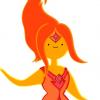I've been diligently working on my game for awhile now, and I have a pretty good idea of what I want to do with my battle mechanics overall. But I'm starting to get into the details of coding it for real (beyond the very basic stuff), and there are still some aspects of it that I haven't nailed down in my design. In this post I'm going to detail what I have decided, as well as some of the decisions I have left to make. I'd love some feedback.
I'd like to say that specifically I'm trying to balance the complexity in such a way that allows for varied gameplay from one battle to the next, but also allowing a relative novice to the genre to catch on pretty quickly. The system can have some complexity to it, but that complexity should be somewhat obscured behind a straightforward front. Think of Pokemon... your average player probably doesn't really dig very deeply at all into the combat mechanics. All he/she really needs to know is higher stats are better, there is a difference between special skills and physical skills, and certain types do more or less damage against other types. Once those are down, pretty much all outcomes in a battle will "make sense". However, for the hardcore among us, you can dig beneath the surface and see that there is some complexity to the system. Pokemon strikes a good balance there.
Moving on...
What I've decided on to date:
- I'm using an initiative based turn system. This means that rather than each side having a turn in which it can move all its units, the units themselves will get a turn based on some initiative score. Faster units will, over the course of a battle, get more turns than slower ones (this will be balanced in various ways).
- I intend to do a lot with having different types of maps with different goals and victory conditions. I also wish to vary size and scope of battles. Some will be on small maps and the player will be able to use ~4-5 units. Others will be much larger and allow 10+ units.
- The things a unit can do will be somewhat standard for the genre. A unit will have a regular attack, some selection of special skills with various effects, and so on.
- A Unit, on its turn, gets 2 actions. These actions can be used to move, attack, move twice, attack twice, use an item, etc. I'm not against having special rules to balance things out if they seem overpowered. Perhaps a second attack would carry a penalty, for example. This will be tested and dealt with appropriately.
- I intend to make damage as deterministic as possible, with little/no randomization. Attacks will always hit, and the amount of damage dealt will be transparent and knowable to the player.
- I'm 95% sure that I'm going with a system where a character has 4 basic stats (Strength, Intelligence, Speed, Cleverness) that will never change. It's a big part of how characters will differ from one another when they all have access to some subset of the same skills. There will be some additional derived statistics that will change over time. For example, a character's Attack Level would be Strength * level or something like that.
Ideas I've had/Things I still have to figure out:
- Make all damage dependent on the appropriate statistic directly. I regular attack will do a characters attack level - the defenders armor in damage. A "power attack" will do Attack Level x 1.5 - armor, and so on. It's simple to understand, but not particularly interesting.
- I could do the above, but throw in a weapon skill stat of some sort that would build up over time as characters use one weapon type over another. Then throw in another multiplier based on that stat. Still not all that interesting, but it would allow some additional differentiation of characters.
- I've thought about adding a weight stat to all equipment. This would effect a characters initiative and possible movement. Going lightly armored would allow you to get around a battlefield very quickly, but heaven help you if you get caught by something big and strong.
- Been thinking about how to balance out extra turns that some chars would get over others movement-wise. Balancing damage output seems workable (you do half the damage twice as often kind of thing), but movement is a little more tricky I think. Maybe its just ok to have smaller weaker units running all over the place. Maybe I should just leave it be for now and adjust later if necessary.
- I've thought about having multiple attacks (2? 3?) with counterattacks from the defender be the standard. This seems like it has pros and cons. Pro: It allows for a diverse range of modifiers. Example: Burst damage, a character performs all 3 of his attacks immediately and does not recieve counterattacks until the end of combat. Con: It kind of clashes with the initiative based turns, where I am already trying to abstract the effects of speed on combat.
Well, that's what I have for now. I would welcome any/all feedback and suggestions. Thanks for reading!






